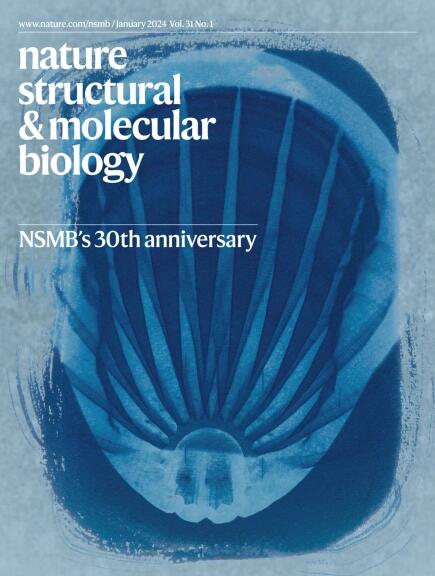SNARE disassembly requires Sec18/NSF side loading
IF 10.1
1区 生物学
Q1 BIOCHEMISTRY & MOLECULAR BIOLOGY
引用次数: 0
Abstract
SNARE (soluble N-ethylmaleimide-sensitive factor (NSF) attachment protein receptor) proteins drive membrane fusion at different cell compartments as their core domains zipper into a parallel four-helix bundle. After fusion, these bundles are disassembled by the AAA+ (ATPase associated with diverse cellular activities) protein Sec18/NSF and its adaptor Sec17/α-SNAP to make them available for subsequent rounds of membrane fusion. SNARE domains are often flanked by C-terminal transmembrane or N-terminal domains. Previous structures of the NSF–α-SNAP–SNARE complex revealed binding to the D1 ATPase pore, posing a topological constraint as SNARE transmembrane domains would prevent complete substrate threading as suggested for other AAA+ systems. Using mass spectrometry in yeast cells, we show N-terminal SNARE domain interactions with Sec18, exacerbating this topological issue. We present cryo-electron microscopy (cryo-EM) structures of a yeast SNARE complex, Sec18 and Sec17 in a nonhydrolyzing condition, which show SNARE Sso1 threaded through the D1 and D2 ATPase rings of Sec18, with its folded, N-terminal Habc domain interacting with the D2 ring. This domain does not unfold during Sec18/NSF activity. Cryo-EM structures under hydrolyzing conditions revealed substrate-released and substrate-free states of Sec18 with a coordinated opening in the side of the ATPase rings. Thus, Sec18/NSF operates by substrate side loading and unloading topologically constrained SNARE substrates. Khan et al. show that Sec18 uses both D1 and D2 AAA+ rings cooperatively, opening them laterally for SNARE substrate loading and for subsequent release of SNAREs.


圈套拆卸需要Sec18/NSF侧加载
SNARE(可溶性n -乙基马来酰亚胺敏感因子(NSF)附着蛋白受体)蛋白驱动不同细胞区室的膜融合,因为它们的核心结构域拉链成平行的四螺旋束。融合后,这些束被AAA+(与多种细胞活性相关的atp酶)蛋白Sec18/NSF及其接头Sec17/α-SNAP分解,使其可用于后续的膜融合。SNARE结构域的两侧通常有c端跨膜结构域或n端跨膜结构域。NSF -α-SNAP-SNARE复合物先前的结构显示与D1 atp酶孔结合,形成拓扑约束,因为SNARE跨膜结构域会阻止其他AAA+系统的底物完全穿线。在酵母细胞中使用质谱分析,我们发现n端SNARE结构域与Sec18相互作用,加剧了这一拓扑问题。我们展示了酵母SNARE复合物Sec18和Sec17在非水解条件下的低温电镜结构,显示SNARE Sso1穿过Sec18的D1和D2 atp酶环,其折叠的n端Habc结构域与D2环相互作用。该结构域在Sec18/NSF活动期间不会展开。水解条件下的低温电镜结构显示Sec18的底物释放和无底物状态,在atp酶环侧有一个协调的开口。因此,Sec18/NSF通过衬底侧加载和卸载拓扑受限的SNARE衬底来工作。
本文章由计算机程序翻译,如有差异,请以英文原文为准。
求助全文
约1分钟内获得全文
求助全文
来源期刊

Nature Structural & Molecular Biology
BIOCHEMISTRY & MOLECULAR BIOLOGY-BIOPHYSICS
CiteScore
22.00
自引率
1.80%
发文量
160
审稿时长
3-8 weeks
期刊介绍:
Nature Structural & Molecular Biology is a comprehensive platform that combines structural and molecular research. Our journal focuses on exploring the functional and mechanistic aspects of biological processes, emphasizing how molecular components collaborate to achieve a particular function. While structural data can shed light on these insights, our publication does not require them as a prerequisite.
 求助内容:
求助内容: 应助结果提醒方式:
应助结果提醒方式:


